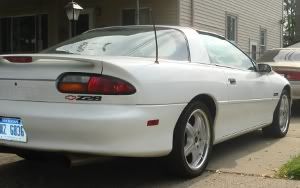Went to snag some Diet Coke today...$10/4-12 packs at Safeway w/ $10 mail in rebate... 
On the way back, I notice the turn signal blinking slowly. A/C isn't putting out. Check Guages comes on and sure enough, voltage is deep in the red. Then the ABS and Traction Control go out. Seems like it's shutting down unecessary systems to preserve battery power.
Then the ABS and Traction Control go out. Seems like it's shutting down unecessary systems to preserve battery power.
No place to work on her here, so she's going to the shop tomorrow. Just turned over 79k. My last car didn't lose an accessory till 118k (starter) and then 127k (ac compressor). Seems to be a little early for an alternator.
Could it have been this horrendous rain in D.C.?? I noticed a slight squeeking from the accessory drive area that started just a few days ago.

On the way back, I notice the turn signal blinking slowly. A/C isn't putting out. Check Guages comes on and sure enough, voltage is deep in the red.
 Then the ABS and Traction Control go out. Seems like it's shutting down unecessary systems to preserve battery power.
Then the ABS and Traction Control go out. Seems like it's shutting down unecessary systems to preserve battery power.No place to work on her here, so she's going to the shop tomorrow. Just turned over 79k. My last car didn't lose an accessory till 118k (starter) and then 127k (ac compressor). Seems to be a little early for an alternator.
Could it have been this horrendous rain in D.C.?? I noticed a slight squeeking from the accessory drive area that started just a few days ago.

 lol
lol


 to change them out. After 4 years, I might as well just get a new one. After that long, the prorated warranty is not going to do much good.
to change them out. After 4 years, I might as well just get a new one. After that long, the prorated warranty is not going to do much good.



Comment